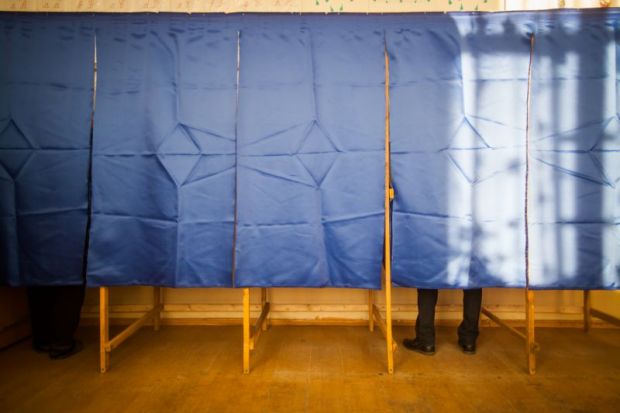Two-thirds of US college students voted in the 2020 presidential election, according to a detailed analysis of the results that describes an explosion of interest during the Trump era.
The 66 per cent turnout among eligible college students marked a 14 percentage point increase from the 2016 election, well above the 6 percentage point gain among all Americans, according to the Institute for Democracy and Higher Education at Tufts University.
The numbers are “nothing short of stunning”, the institute’s director, Nancy Thomas, said in announcing the findings.
The outcome suggests potentially important gains for the policy interests of US college students and their institutions, as political experts had long derided students as easily ignored – far more likely to protest than to cast votes.
“It may have been a blip generated by dislike of President Trump, but a 66 per cent college student turnout is truly remarkable,” said one those experts, Larry Sabato, a professor of politics and director of the Center for Politics at the University of Virginia.
“Voting can be like inertia – an object in motion tends to remain in motion – so this should give us hope that at least some of the gain will be maintained,” Professor Sabato said.
Compiling the data took nearly a year because there is no direct way of measuring the student vote. Instead, the Tufts institute works with cooperating institutions to assemble the numbers.
Its analysis for 2020 involves more than 8.8 million students at more than 1,000 US campuses of all sectors, including 49 of the nation’s 50 flagship institutions. The institute’s studies date back to the 2012 election, with turnout increasing in both of the presidential elections since then.
Gains in student turnout from 2016 to 2020 were highest among younger college students, and among undergraduates. Among sex and gender groups, white women were most active, with 73 per cent of eligible voters casting ballots. Voting by Asian American students rose the most, up 17 percentage points from 2016, although their turnout still remained lower than other demographic groups.
The Tufts authors suggested various reasons for the motivation of students to vote last year, especially during the pandemic, including racial concerns generated by the George Floyd killing and other manifestations of social inequity; the threat of climate change; and the “divisive, discriminatory rhetoric and actions of the prior administration”.
With that new power, students also face the likelihood of blowback, the Tufts experts said. Just days before they issued their voter turnout data, they published an analysis showing that hundred of US campuses and other residential communities housing US college students are being split by gerrymandering techniques, almost entirely by Republicans seeking to dilute their voting strength.
Register to continue
Why register?
- Registration is free and only takes a moment
- Once registered, you can read 3 articles a month
- Sign up for our newsletter
Subscribe
Or subscribe for unlimited access to:
- Unlimited access to news, views, insights & reviews
- Digital editions
- Digital access to THE’s university and college rankings analysis
Already registered or a current subscriber? Login








